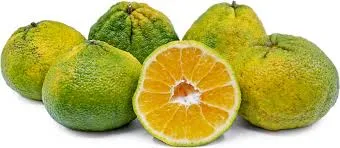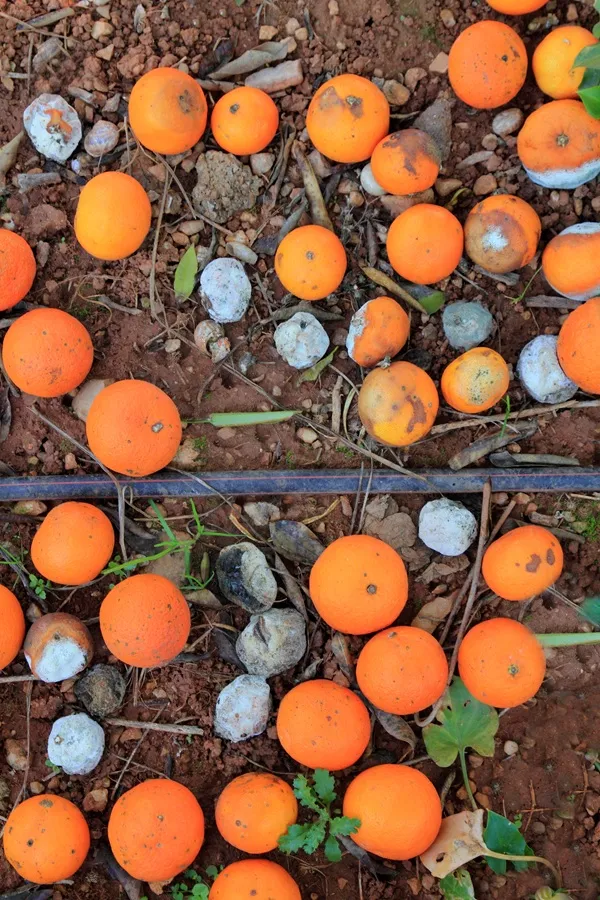Table of Contents
Ugli Fruit: The Jamaican Citrus Jewel – A Comprehensive Guide
1. Introduction
The Ugli fruit, a unique citrus hybrid, is a cross between a grapefruit, orange, and tangerine (Citrus reticulata × paradisi). Originating in Jamaica, its name derives from its rough, wrinkled exterior, but its sweet-tangy flesh has made it a beloved tropical delicacy. This guide explores its global significance, cultivation, and culinary versatility.
2. Origin & Global Varieties
- Parentage: A natural hybrid discovered in Jamaica, combining grapefruit, Seville orange, and tangerine.
- Names: Marketed as "Ugli®" (a trademarked brand), but botanically classified as a tangelo.
- Comparisons:
- Minneola Tangelo: Bell-shaped, bright red-orange skin.
- Orlando Tangelo: Smaller, less bumpy than Ugli.
- Ugli Distinction: Larger, greenish-yellow, lumpy rind; sweeter and less bitter than grapefruit.
3. Taste & Culinary Uses
- Flavor Profile: Sweet with mild tartness, juicy texture, and floral notes.
- Uses:
- Fresh: Segmented in salads or eaten raw.
- Juicing: Refreshing beverages, cocktails (e.g., Ugli mimosa).
- Desserts: Sorbets, tarts, or paired with dark chocolate.
- Savory: Glazes for poultry, ceviche, or salsa.
4. Nutritional Profile & Health Benefits
- Nutrition (per 100g):
- Calories: 47 | Vitamin C: 70% DV | Fiber: 2g | Potassium: 5% DV | Antioxidants: Flavonoids, limonoids.
- Glycemic Index (GI): ~40–45 (low), suitable for blood sugar management.
- Health Benefits:
- Immunity Boost: High vitamin C content.
- Digestive Health: Dietary fiber aids gut function.
- Anti-Inflammatory: Antioxidants combat oxidative stress.
5. Cultivation Practices
- Climate: Tropical to subtropical (18–30°C), frost-free with moderate rainfall.
- Soil: Well-drained, sandy loam; pH 6.0–7.5.
- Pollination: Self-fertile but benefits from cross-pollination by bees.
- Harvest: Winter to early spring (peak sweetness).
6. Byproducts & Processing
- Juice: Sold fresh or pasteurized; popular in Caribbean markets.
- Jams/Jellies: Sweet spreads highlighting its tangy flavor.
- Essential Oils: Extracted from rind for aromatherapy and cosmetics.
- Candied Peel: A traditional treat in Jamaica.
7. Storage & Preservation
- Fresh: Store at room temperature (1 week) or refrigerate (2–3 weeks).
- Freezing: Juice or segments can be frozen (up to 6 months; texture softens).
- Drying: Dehydrated slices for snacks (rare due to high moisture).
8. Culinary Inspiration: Quick Recipes
- Ugli Fruit Salad:
- Combine segments with mint, avocado, and red onion; drizzle with lime-honey dressing.
- Ugli Mojito:
- Muddle Ugli juice, mint, rum, and soda water; garnish with a wedge.
- Citrus Glazed Salmon:
- Reduce Ugli juice with soy sauce and ginger; brush over grilled fish.
9. Major Producers & Trade
- Top Producers:
- Jamaica: Primary grower, supplying domestic and export markets.
- USA (Florida): Limited cultivation under the "tangelo" label.
- Exporters: Jamaica (to North America, UK, EU), Israel (experimental crops).
- Importers: USA, Canada, UK, specialty grocers in Europe.
10. Home Planting Guide
- Climate Suitability: USDA zones 9–11; protect from frost.
- Planting Tips:
- Use grafted saplings for faster fruiting (3–4 years).
- Space trees 4–6 meters apart; prune for airflow.
- Pests:
- Citrus Canker: Bacterial disease causing leaf lesions.
- Aphids/Scale Insects: Treat with neem oil or insecticidal soap.
11. Return on Investment (ROI)
- Costs:
- Orchard Setup: $2,000–$5,000/acre (saplings, irrigation).
- Labor: Hand-harvesting increases costs but preserves fruit quality.
- Profitability:
- Fresh Ugli: $3–$6/kg in specialty markets.
- Value-Added Products**: Jams or juices yield 30–50% higher margins.
12. Sustainability & Challenges
- Water Management: Drip irrigation in drought-prone areas.
- Organic Demand: Rising interest in pesticide-free Ugli fruit.
- Market Niche: Positioned as an exotic, premium citrus in global markets.
13. Cultural Significance
- Jamaican Heritage: Symbolizes tropical abundance; featured in local festivals.
- Global Appeal: Embraced by chefs for its unique appearance and flavor.
Conclusion
The Ugli fruit, with its paradoxical beauty and luscious interior, exemplifies nature’s hidden treasures. From Jamaican orchards to gourmet kitchens, it bridges tradition and innovation. As consumers seek novel, nutrient-rich foods, the Ugli fruit’s potential in global agriculture and cuisine continues to blossom.
Pro Tip: Use Ugli zest to elevate baked goods or cocktails with a citrusy aroma!
Savor the Ugli fruit – where rugged charm meets succulent sweetness. 🍊🌴








